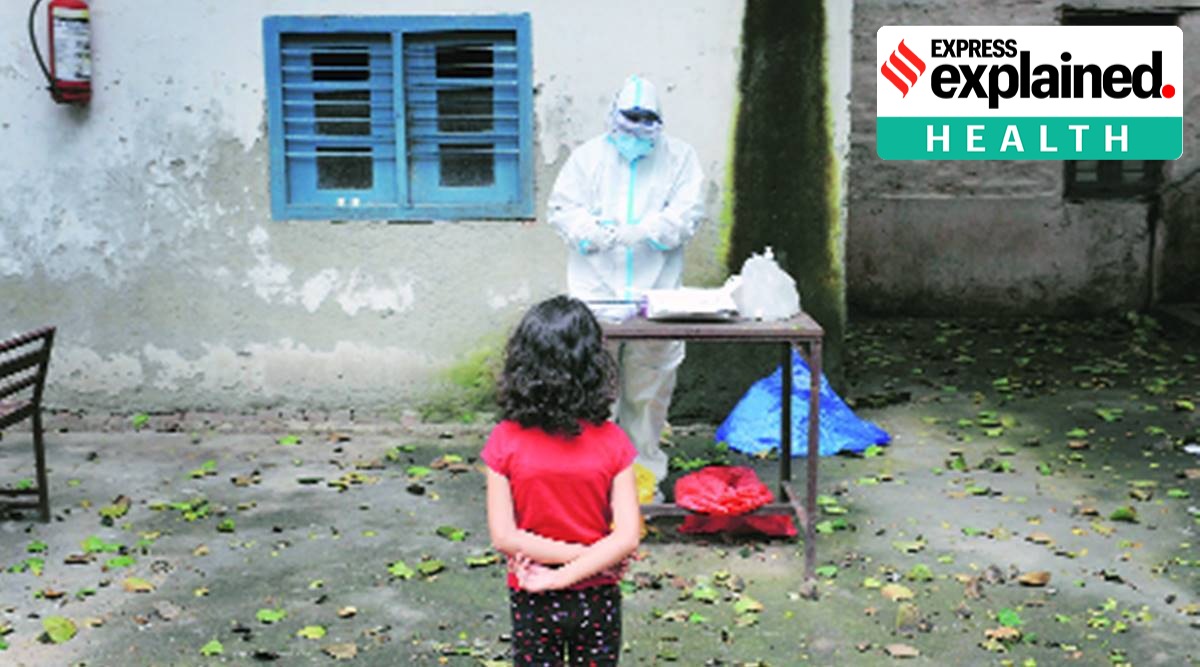Jharkhand is preparing to carry out a massive “Intensive Public Health Survey” covering all households in rural and urban areas to map the spread of Covid-19 cases and identify related deaths, estimated to be much higher than official records. The government has marked out a strategy for the survey as well as control measures.
A letter issued to all Deputy Commissioners on May 14, said the public survey will be conducted “to prevent the spread of infection in the community” as it is important to “identify the cases early, diagnose early and institute early preventive and treatment measures so as to reduce the spread and prevent serious morbidity and mortality”.
The letter said: “Priority needs to be given to 40-plus people as well as well as people with comorbid conditions… All people showing any symptoms cough, fever, body ache, taste will be tested with Rapid Antigen Testing.” The letter added that the survey has been divided into seven days with specific tasks for each day. The surveyors will also track pregnant women and also check-up children. However, there has been nothing in writing to count the number of deceased, but a senior Health Department Official said: “When we will go door to door, we will also count the number of deaths that have happened. We need to know the extent of damage.”
What is the motive behind such a survey and how does the government plan to carry it out?
As on May 16, Jharkhand has an active caseload of 41,386 with 4431 cumulative deaths. Since April 1, 3318 people in the state have died of Covid-19. Though the weekly positivity rate has decreased and on May 16, it stood around 7%, the spread in rural areas is not being fully included in official records. The move has been initiated to prevent the spread of infection in the rural community as it is important that the cases are identified, diagnosed early resulting in preventive measures and treatment so as to reduce the spread and prevent ‘serious morbidity’ and ‘mortality.’ Through the survey the government will also count its deceased to get a sense of deaths during the pandemic. The government will employ around one lakh Sahiyas (ASHAs), Sevikas, Auxiliary Nurse Midwives and Community Health Officers to conduct this door-to-door exercise.
What are the elements of the survey?
The Health Department has divided the survey into several parts.
Early identification and diagnosis: As a part of the public health survey, Sahiyas will visit every household in her assigned field area and enquire about signs and symptoms of Covid-19 in all the members of that family. During the visits, if a person presents with signs and symptoms, the Sahiya will conduct a Rapid Antigen Test (RAT) of that person and conduct RAT tests of all other family members. Positive cases may be referred to Isolation Centers identified in Village panchayats. In case of deaths, the Sahiyas will also note down the Covid-19 deaths as well as suspected deaths.
Screening of mobile and in-transit population: Block Program Managers among others will ensure RAT testing in their block. They will ensure that RAT testing is done at places where there is common movement of people. RAT Testing Facility will established at local haat bazaars, BDO office campuses, autorickshaw and bus stands. Block offices will use a mobile van to conduct Rapid Antigen Testing at block level with a defined route chart.
Knowing the vaccination status: During home visits, Sahiyas will enquire about vaccination status for eligible beneficiaries and motivate as well as mobilize them for age appropriate Covid-19 vaccination.
Will there be an inter-departmental coordination?
Yes, the government has also ordered for an inter-departmental coordination for the survey as well as in conducting tests, making arrangements, running panchayat isolation and block level call centres, arrangement of ambulances among others. A May 15 letter by Additional Chief Secretary (Health) Arun Singh said: “…We are getting information about the infection and deaths in rural areas… For better management, a Block Covid Task Force needs to be constituted which will include nine officials including Block Development Officers to Civil Surgeon to Police Station Incharge to Block PRI Officers among others.” The Health Department said this would mean integrating all frontline workers for the task.
How does it plan to conduct tests in urban areas during the drive?
The Health Department has ordered the establishment of a Rapid Antigen Test Booth in all Municipal Corporation/ Councils and Notified Area Council. In Ranchi, East Singhbhum, Dhanbad at least 20 such booths in each district will be made functional.
There have been a few post Covid deaths in many parts of Jharkhand. Has the government planned to take action in this regard?
Yes, surveys will also try to capture this from the people who have recovered. In addition, the Health Department has ordered to restart Post Covid Care and Treatment Ward in Rajendra Institute of Medical Sciences in Ranchi, Bokaro General Hospital, Dhanbad’s Sahid Nirmal Mahato Medical College and Hospital, and in the three Medical College and Hospitals in Hazaribagh, Dumka, Palamu.
There have been several cases of Mucormyosis—a rare fungal infection seen among the Covid-19 positive persons or those who recovered from it—in Jharkhand too. A lot of people across the country have also died due to cardiac arrest following the disease. Through Post Covid Care and Treatment wards, the government plans to keep a tab on them.
